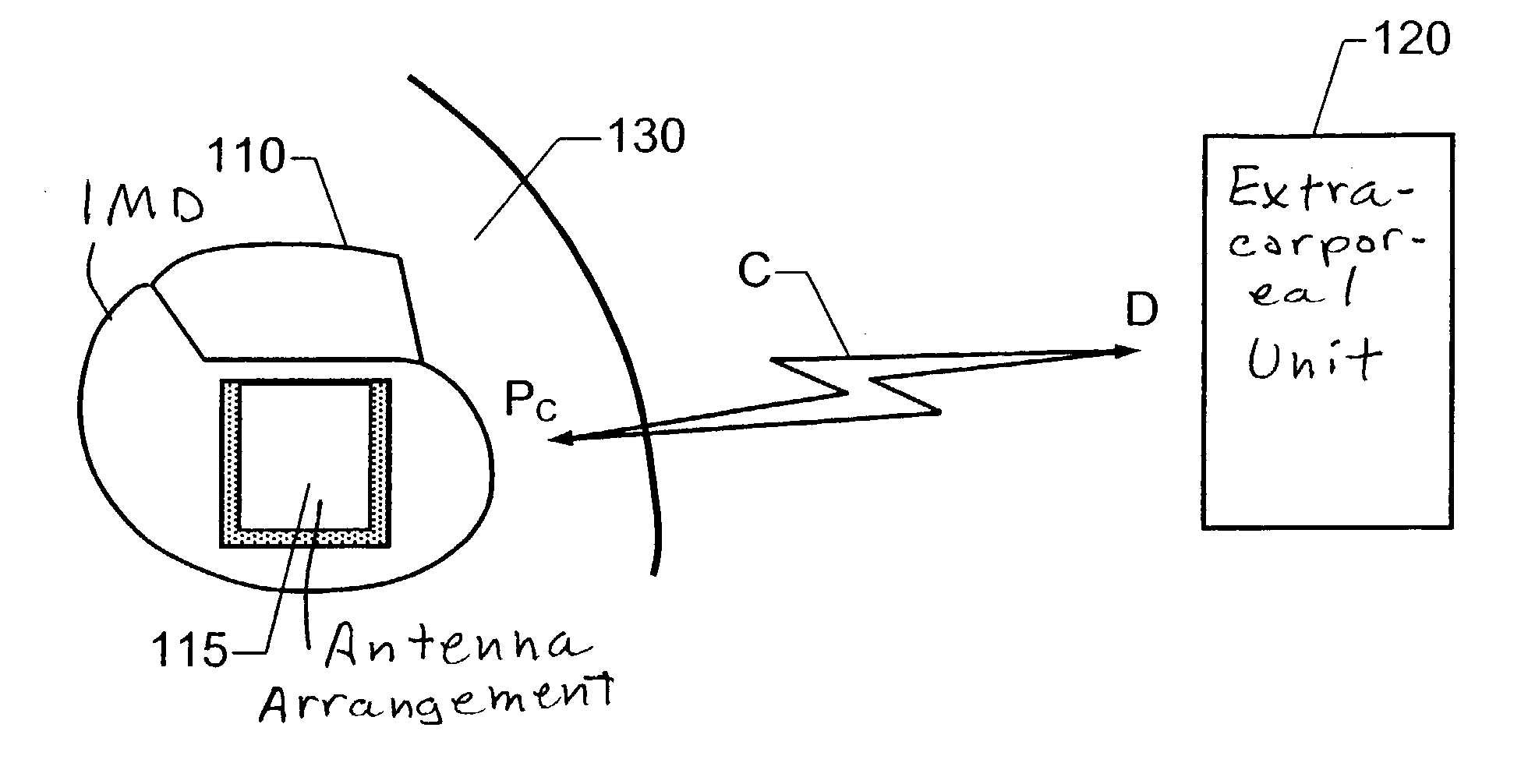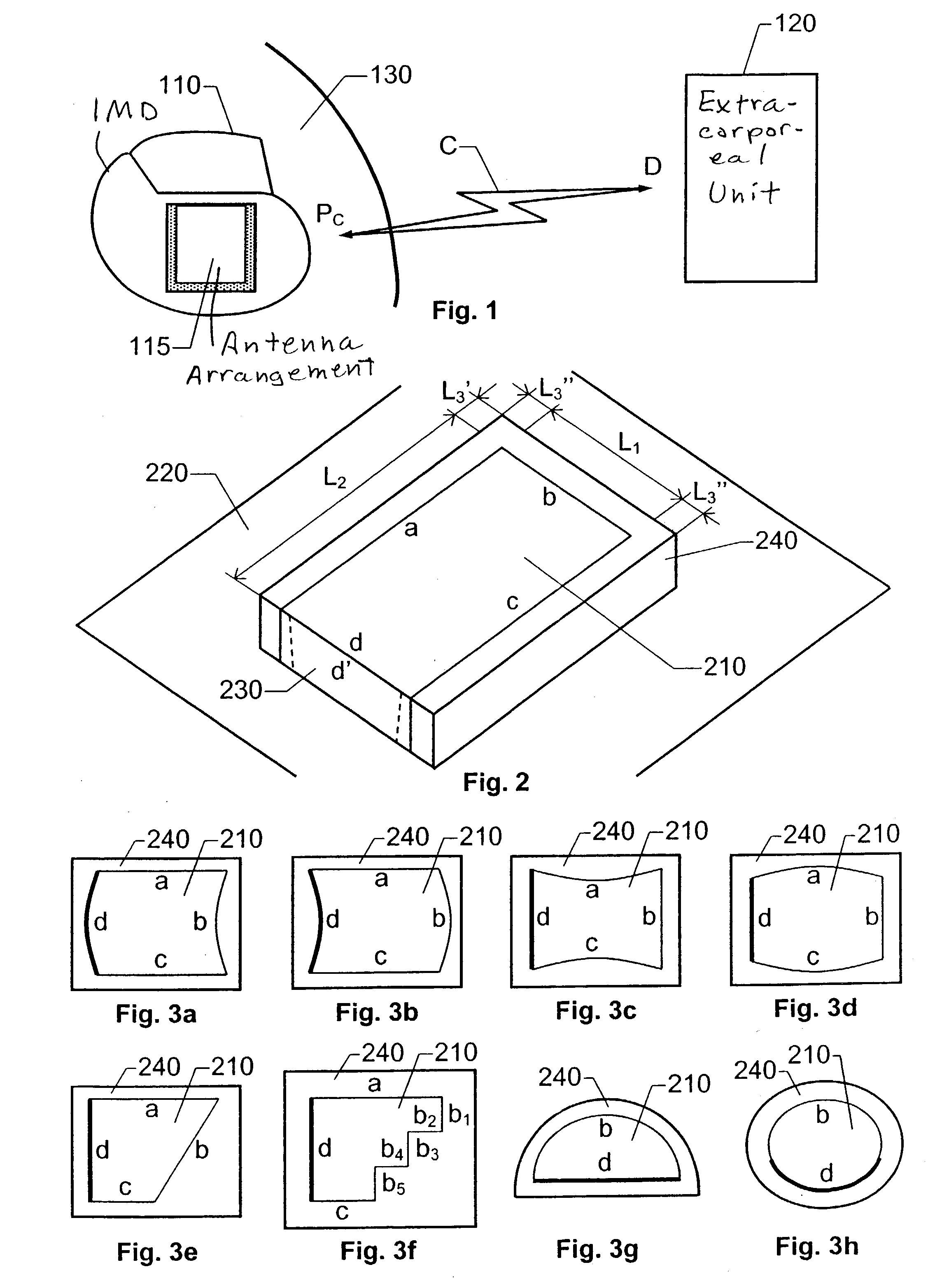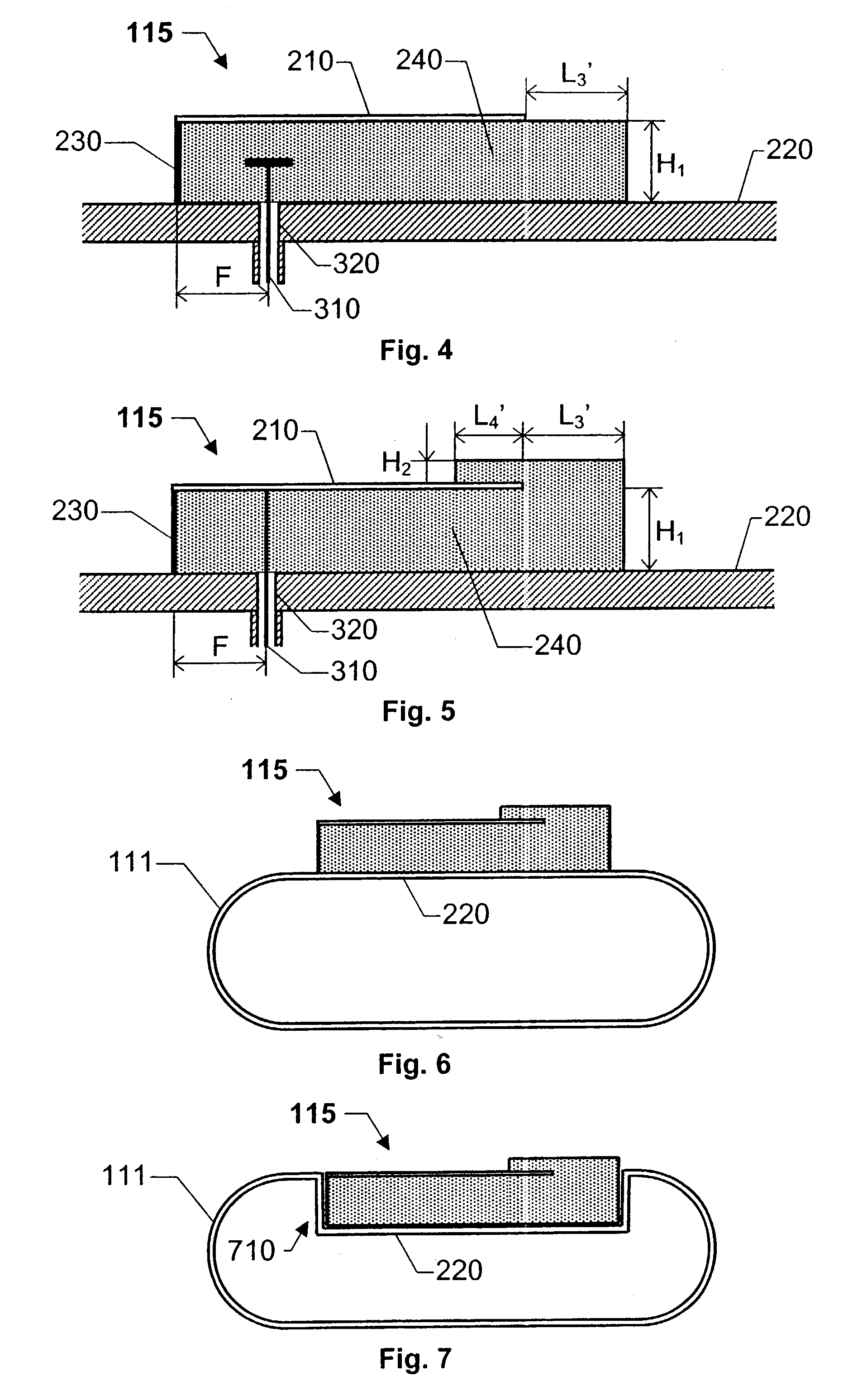Implantable antenna for use with an implantable medical device
a medical device and implantable technology, applied in the field of implantable medical devices, can solve the problems of inconvenient patient and staff conducting procedures, relative short distance, and low maximum data rate of inductive interfaces
- Summary
- Abstract
- Description
- Claims
- Application Information
AI Technical Summary
Benefits of technology
Problems solved by technology
Method used
Image
Examples
Embodiment Construction
[0036] A wireless communication scenario involving an IMD 110 and an extracorporal unit 120 is shown schematically in FIG. 1. Data D and Pc may here be transferred in both directions between the IMD 110 and the extracorporal unit 120 over a radio link C. Typically, parameter settings or updating software Pc is sent from the unit 120 to the IMD 110 while measurement data D is sent in the opposite direction for various monitoring and diagnostic purposes.
[0037] According to the invention, an antenna arrangement 115 in the IMD 110 is used to exchange modulated electromagnetic energy with the surrounding transmission medium, i.e. the relevant body tissue 130. Specifically, this means that outgoing radio signals D are coupled through the body 130 and out into the contiguous environment, such as the air. The radio signals D then continue to propagate via the air to the extracorporal unit 120 where they are received, for example by a conventional radio antenna. Correspondingly, incoming rad...
PUM
 Login to View More
Login to View More Abstract
Description
Claims
Application Information
 Login to View More
Login to View More - R&D
- Intellectual Property
- Life Sciences
- Materials
- Tech Scout
- Unparalleled Data Quality
- Higher Quality Content
- 60% Fewer Hallucinations
Browse by: Latest US Patents, China's latest patents, Technical Efficacy Thesaurus, Application Domain, Technology Topic, Popular Technical Reports.
© 2025 PatSnap. All rights reserved.Legal|Privacy policy|Modern Slavery Act Transparency Statement|Sitemap|About US| Contact US: help@patsnap.com



